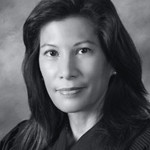In the wake of that state auditor’s report questioning some $30 million in judicial branch spending Audit finds $30 million in ‘questionable’ court spending and salaries, California’s Chief Justice Tani Cantil-Sakauye is going on the defensive. In a relatively rare SoCal TV interview with Los Angeles NBC affiliate Channel 4.
The TV setup notes that “… Cantil-Sakauye has been criticized by a group of lower-court judges for not doing enough to send resources to Superior Courts in the state’s 58 counties. The Alliance of California Judges seized on a recent audit which questioned nearly $30 million in court staff spending. The audit noted the use of 66 state cars by staff, that some court administrators made more than the governor and had offices in three cities instead of one.” She counters by noting cutbacks and need for multiple offices to meet the needs of different sections of the state. See the interview here: CA Chief Justice on State of Courts

